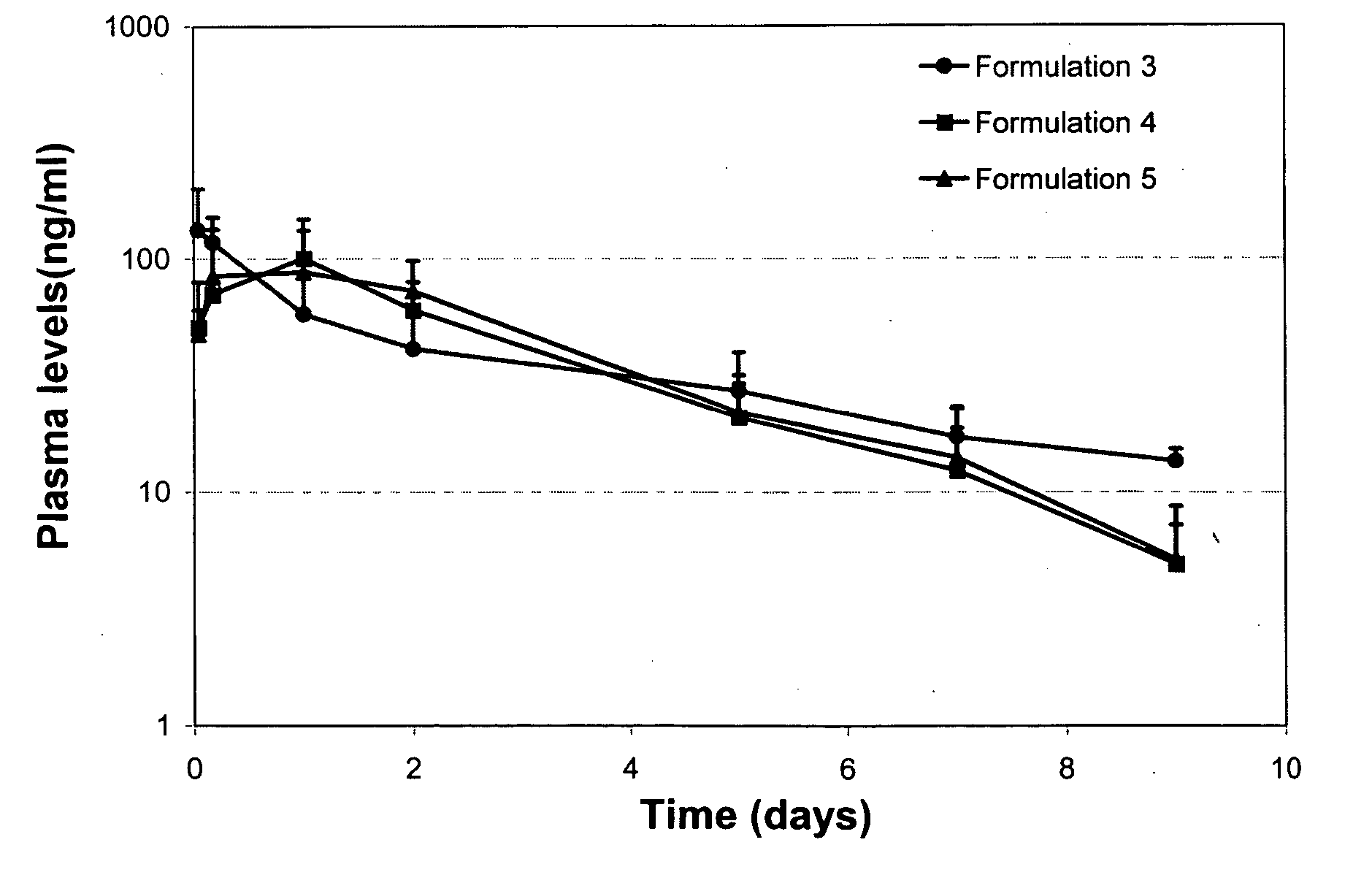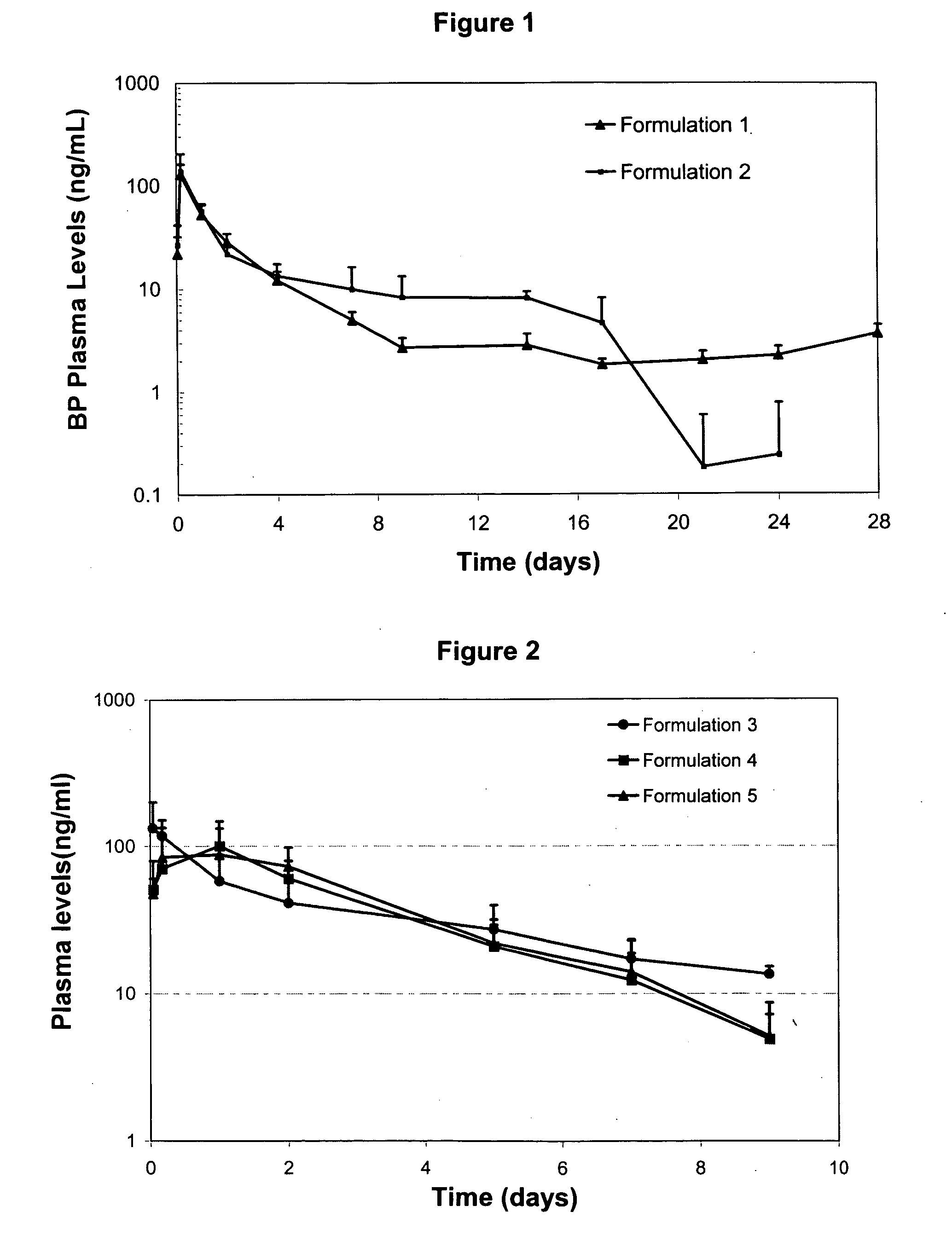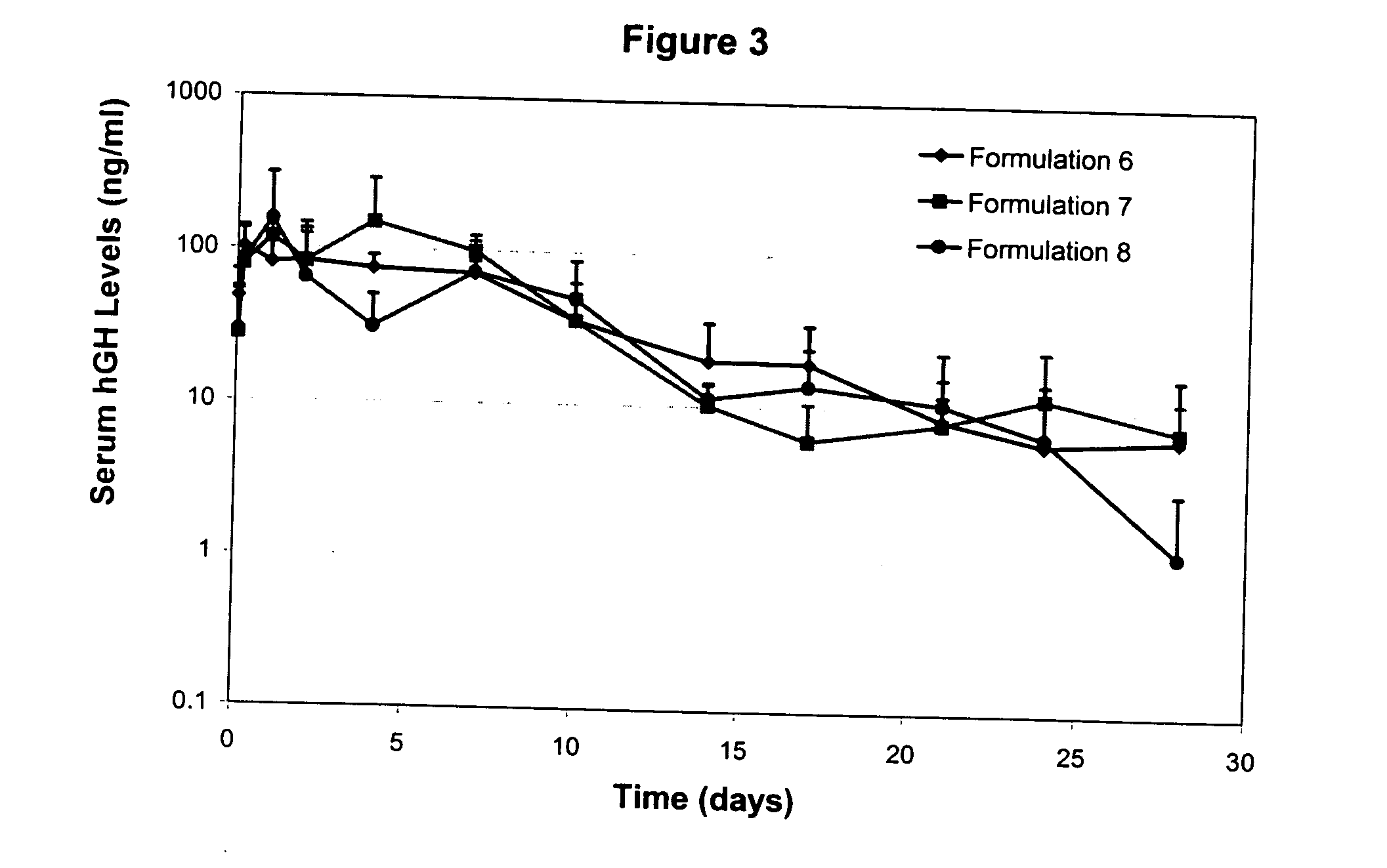Excipients in drug delivery vehicles
a delivery vehicle and drug technology, applied in the direction of peptide/protein ingredients, metabolism disorders, prosthesis, etc., can solve the problems of non-homogeneous pore structure of implants, rapid water migration into such polymeric implants using water soluble solvents, serious problems, etc., to achieve efficient distribution of beneficial agents, reduce the loading rate of beneficial agents, and the effect of constant release ra
- Summary
- Abstract
- Description
- Claims
- Application Information
AI Technical Summary
Benefits of technology
Problems solved by technology
Method used
Image
Examples
example 1
Depot Gel Preparation
[0101] A gel vehicle for use in an injectable depot of the composition was prepared as follows. A glass vessel was tared on a Mettler PJ3000 top loader balance. Poly (D,L-lactide-co-glycolide) (PLGA), available as 50:50 DL-PLG with an inherent viscosity of 0.15 (PLGA-BPI, Birmingham Polymers, Inc., Birmingham, Ala.) and 50:50 Resomer® RG502 (PLGA RG 502), was weighed into the glass vessel. The glass vessel containing the polymer was tared and the corresponding solvent was added. Amounts expressed as percentages for various polymer / solvent combinations are set forth in Table 1, below. The polymer / solvent mixture was stirred at 250±50 rpm (IKA electric stirrer, IKH-Werke GmbH and Co., Stanfen, Germany) for about 5-10 minutes, resulting in a sticky paste-like substance containing polymer particles. The vessel containing the polymer / solvent mixture was sealed and placed in a temperature controlled incubator equilibrated to 37° C. for 1 to 4 days, with intermittent...
example 2
Bupivacaine Base Preparation
[0103] Bupivacaine hydrochloride (Sigma-Aldrich Corporation, St. Louis, Mo.) was dissolved in de-ionized (DI) water at a concentration of 40 mg / ml (saturation). A calculated amount of sodium hydroxide (1 N solution) was added to the solution and the pH of the final mixtures was adjusted to 10 to precipitate the BP base. The precipitated product was filtered, and further washed with DI water for at least three times. The precipitated product was dried at approximately 40° C. in vacuum for 24 hours.
example 3
Bupivacaine Particle Preparation
[0104] Bupivacaine drug particles using bupivacaine hydrochloride (Sigma-Aldrich Corporation, St. Louis, Mo.) or bupivacaine base prepared according example 2 and hydrochloride salt, were prepared as follows. Bupivicaine was grounded and then sieved to a fixed range using 3″ stainless steel sieves. Typical ranges included 25 μm to 38 μm, 38 μm to 63 μm, and 63 μm to 125 μm.
PUM
| Property | Measurement | Unit |
|---|---|---|
| weight % | aaaaa | aaaaa |
| weight % | aaaaa | aaaaa |
| weight % | aaaaa | aaaaa |
Abstract
Description
Claims
Application Information
 Login to View More
Login to View More - R&D
- Intellectual Property
- Life Sciences
- Materials
- Tech Scout
- Unparalleled Data Quality
- Higher Quality Content
- 60% Fewer Hallucinations
Browse by: Latest US Patents, China's latest patents, Technical Efficacy Thesaurus, Application Domain, Technology Topic, Popular Technical Reports.
© 2025 PatSnap. All rights reserved.Legal|Privacy policy|Modern Slavery Act Transparency Statement|Sitemap|About US| Contact US: help@patsnap.com



